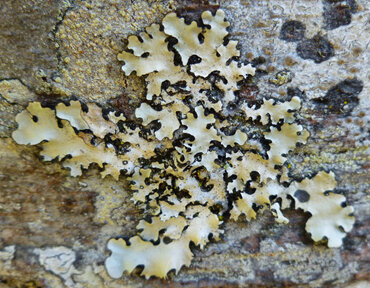
Posted on August 15, 2014
Who doesn't love natural stuff! Knowing you're supporting a good cause, using a product that isn't going to contribute to landfill waste, something that can be composted or otherwise recycled… but just because something is "natural" doesn't make it *safe*! After all, arsenic is natural, so is cyanide... both are toxic too.
I recently went into a pet store here in Auckland and was horrified to see "natural" pet toys that had in no way been prepared to a level that could be considered safe. They had not been cleaned and were covered in lichen, moss, and in cracks and crevices and bark layers there was mould! And that was just the visible 'dirt', as the wood obviously hadn't been cleaned or prepared one can only speculate at the bacteria and parasites that are also on the wood, not to mention toxic sap (most of the wood appeared to be pine) and seeds in unopened cones.
For this article I will focus on the presence of lichen on wood;
What is lichen? Lichen is a symbiotic organism, it is part fungus and part algae or bacteria, it is commonly found growing on trees and rocks, where the bacteria photosynthesises nutrients to feed the fungus and allow it to grow.
Recent studies on lichen have found that one in eight species of lichen studied so far (there are over 20,000 species of lichen, so far 803 have been studied) contain Microcystins, these are toxic peptides produced by Cyanobacteria, a common co-factor in lichens. Cyanobacteria also exist separately from fungus in waterways where they are generally called blue-green algae (even though they aren't actually an algae).
The World Health Organisation has set guidelines for allowable Microcystin content of water, the allowable level is 0.001mg per litre of water, research into the lichens have shown some species contain as much as 0.2mg per GRAM of lichen... there are approximately 1000grams in 1 litre.
How do microcystins affect the body? Microcystins are hepatotoxic, this means they settle mostly in the liver (they can also settle in other tissues) and impair the function of the liver, this will eventually lead to the liver shutting down which is an almost certain death sentence unless the liver can restart its function, and a long, slow, painful death at that. Because it slowly kills the animal by poisoning the liver it takes a long time for signs to show, this is not something where you will give your pet the contaminated toy and the next day they'll be dead, no no, you will give your pets these for months and months, possibly years, and slowly over time they will lose condition, lose weight, suffer digestive issues, serious pain, and eventually, slowly, die from an overflow of bile that will attack their internal organs. Sounds like a lovely way to go right?... I think not!
Keep in mind, that lichens are almost impossible for lay-people to distinguish one species from the next, in fact, the research project that discovered the existence of toxic microcystins studied two species of lichen from an area in China that looked identical, one was toxic, one was not, so trusting a seller to say, "Oh this isn't a toxic variety," carries no weight, unless the statement maker has a degree in lichenology
If you are content to feed your pet lichens, by all means go ahead, but I feel it is incredibly bad practice for these persons (and this pet store is not the only one selling these types of products) to be selling products that could potentially lead to the death of a pet without any kind of warning to consumers.